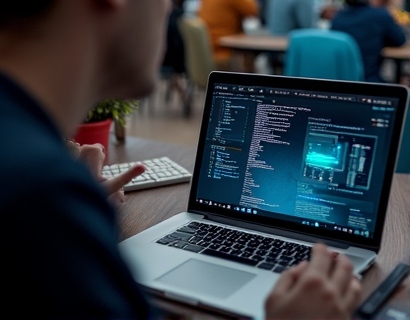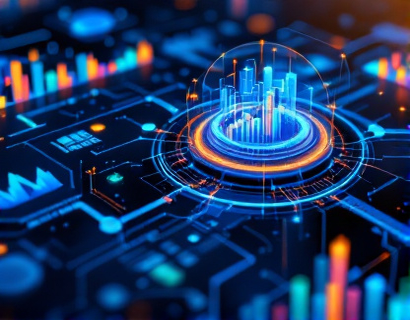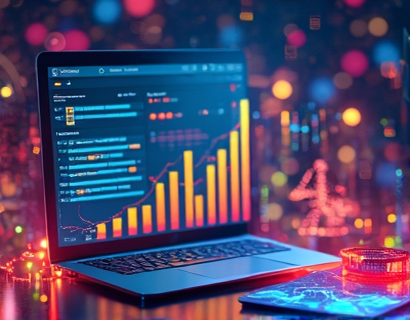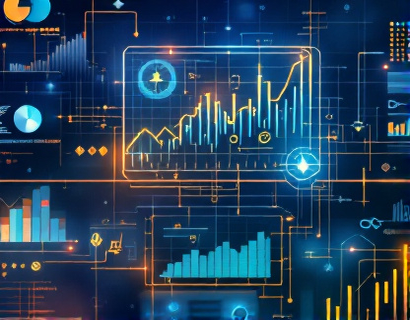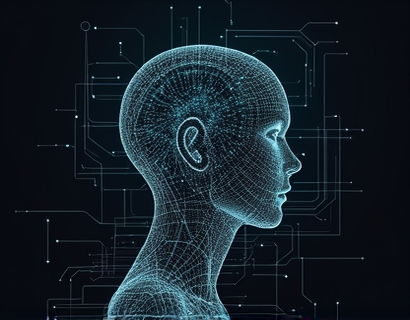Transforming Business Analytics with AI and Blockchain: A New Era of Secure and Transparent User Tracking Solutions
The integration of Artificial Intelligence (AI) and Blockchain technology is revolutionizing the landscape of business analytics, particularly in the realm of user tracking and behavior analysis. This fusion offers unprecedented opportunities for businesses to gain deep insights into user behavior, enhance customer engagement, and make strategic decisions based on secure and transparent data. As organizations increasingly rely on data-driven strategies, the need for advanced analytics solutions that ensure both efficiency and security has become paramount.
Understanding the Synergy of AI and Blockchain in Analytics
AI brings to the table its unparalleled ability to process vast amounts of data, identify patterns, and predict future trends with high accuracy. When combined with Blockchain's inherent properties of decentralization, immutability, and transparency, the potential for transformative analytics solutions becomes evident. Blockchain ensures that data transactions are secure, tamper-proof, and verifiable, addressing some of the key concerns in data privacy and integrity.
Enhanced User Behavior Insights
The synergy of AI and Blockchain enables businesses to collect and analyze user behavior data in a manner that is both comprehensive and secure. AI algorithms can process real-time data streams from various sources, including web interactions, social media activities, and transaction histories. Blockchain technology ensures that this data is recorded in a decentralized ledger, making it accessible for analysis while maintaining user privacy and data integrity.
By leveraging AI, businesses can uncover intricate patterns in user behavior that were previously invisible. For instance, AI can analyze browsing patterns, click-through rates, and time spent on specific pages to create detailed user profiles. These profiles are not only rich in insights but also compliant with stringent data protection regulations, thanks to the secure nature of Blockchain.
Secure Data Transactions and Privacy Protection
One of the most significant advantages of using Blockchain in user tracking is the enhancement of data security and privacy. Traditional analytics methods often face challenges related to data breaches and unauthorized access. Blockchain's cryptographic techniques and decentralized architecture mitigate these risks by ensuring that data is encrypted and distributed across multiple nodes, making it extremely difficult for malicious actors to alter or steal information.
Moreover, Blockchain provides users with greater control over their data. Through smart contracts, users can grant or revoke access to their data with precision, ensuring that only authorized parties can view or utilize their information. This level of control not only builds trust between businesses and their users but also complies with global data protection standards such as GDPR.
Transparent Analytics for Trust and Compliance
Transparency is a cornerstone of Blockchain technology, and this characteristic translates directly into the realm of business analytics. With a Blockchain-based analytics platform, every data transaction is recorded and can be traced back to its origin. This transparency ensures that all stakeholders, including users, regulators, and business owners, can verify the authenticity and integrity of the data being analyzed.
For businesses, this means a reduced risk of legal and reputational issues related to data misuse. Regulatory compliance becomes more straightforward as the immutable nature of Blockchain provides a clear audit trail. This transparency also fosters trust among users, who are increasingly concerned about how their data is used and protected.
Driving Strategic Decision-Making
The insights gained from AI and Blockchain-powered analytics are not just valuable; they are transformative. Businesses can leverage these insights to refine their marketing strategies, optimize user experiences, and identify new revenue opportunities. For example, by analyzing user behavior patterns, companies can personalize content and offers, leading to higher engagement rates and customer satisfaction.
Moreover, the predictive capabilities of AI, combined with the secure and transparent data provided by Blockchain, enable businesses to make informed decisions with a higher degree of confidence. Whether it's forecasting market trends, optimizing supply chains, or enhancing product development, the data-driven insights from this technology fusion offer a competitive edge.
Case Studies and Real-World Applications
Several industries have already begun to harness the power of AI and Blockchain for analytics. In the retail sector, a major e-commerce platform implemented a Blockchain-based user tracking system to enhance customer experience and security. By using AI to analyze user interactions and Blockchain to secure data transactions, the platform successfully reduced fraudulent activities and improved customer trust.
In the financial services industry, a leading bank adopted a similar approach to monitor customer behavior and detect fraudulent transactions. The combination of AI for pattern recognition and Blockchain for secure data storage resulted in a significant reduction in false positives and a more robust fraud detection system.
Challenges and Considerations
While the potential benefits are substantial, the integration of AI and Blockchain in business analytics is not without challenges. One of the primary concerns is the technical complexity involved in implementing such a system. Businesses need to invest in skilled personnel and infrastructure to develop and maintain these advanced solutions.
Another consideration is the scalability of Blockchain networks. While Blockchain offers many advantages, its performance can be limited by network congestion and transaction processing speeds. However, ongoing developments in Blockchain technology, such as layer 2 solutions and sharding, are addressing these issues, making scalable analytics solutions more feasible.
Future Trends and Innovations
The future of AI and Blockchain in business analytics is promising, with several emerging trends poised to further enhance their capabilities. One such trend is the integration of AI with Internet of Things (IoT) devices, enabling real-time data collection and analysis from a vast array of sources. This combination can provide even deeper insights into user behavior and environmental factors affecting user interactions.
Additionally, the development of privacy-preserving AI techniques, such as federated learning, allows for model training on decentralized data without compromising user privacy. This approach ensures that sensitive user data remains on local devices, further enhancing security and compliance.
Conclusion
The fusion of AI and Blockchain is transforming business analytics by providing secure, transparent, and insightful user tracking solutions. As businesses continue to navigate the complexities of data-driven decision-making, this technology fusion offers a robust framework for enhancing customer engagement and strategic planning. By embracing these innovative solutions, organizations can not only stay ahead of the competition but also build a foundation of trust and integrity in their data practices.









